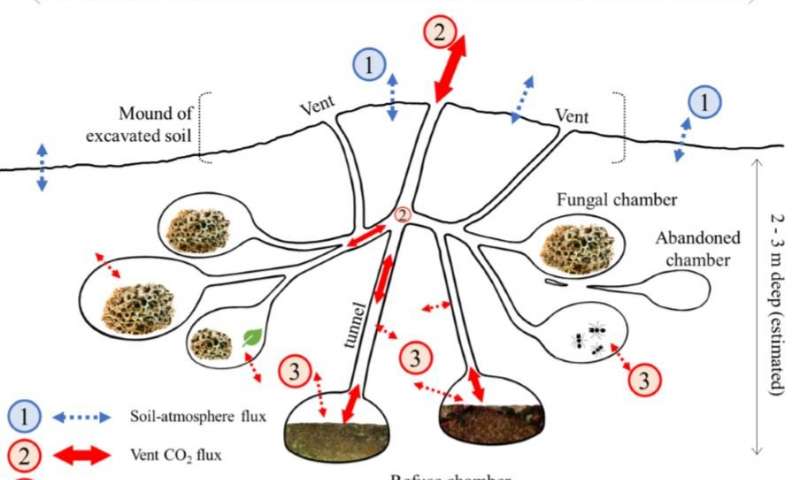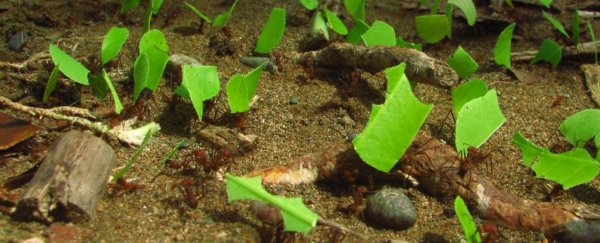As we try to monitor and manage the delicate balance of greenhouse gases in the atmosphere, we're beginning to realise that we have a lot to learn about the contributing factors involved.
Case in point: we just found out that leaf-cutter ants create tiny little 'factories' in the jungle, with air vents that push out up to 100,000 times more carbon dioxide than untouched soil.
The impact of these tiny creatures could become so profound that the researchers want their behaviour added to future climate forecasts.
The researchers think these Atta cephalotes ants could already be responsible for 0.2-0.7 percent of the CO2 emissions released from neotropical (Central and South American) rainforests – a figure that could go higher as the leaf-cutters expand their habitat in response to warmer temperatures.
"The vents coming out of the nest were really remarkable. The first time we saw [measurements] we were like 'wow'," says one of the team, Thomas Harmon from the University of California Merced.
"You can kind of envision them as little factories in the jungle."
So why are these nests pumping out so much CO2?
Rainforest soil is typically packed with carbon dioxide, thanks to its clay-like nature, the heavy rains, and the amount of oxygen conversion that the vegetation and underground bacteria manage to get through.
With leaf-cutter ants digging so deep underground – up to 7 metres (23 feet) below the surface – and then fashioning air vents and chimneys on top of their nests, a lot more of this stored CO2 gets pumped out.
 (JGR- Biogeosciences/AGU)
(JGR- Biogeosciences/AGU)
That's partly to do with the temperature differences between the nest and the air above, with the warmer underground air rising quickly given the opportunity. At night, the temperature difference is even greater.
The result is that CO2 is pouring out of the nests' air vents - at a rate of up to 100,000 times more than surrounding untouched soil.
The ants work ceaselessly to bring leaves back home, leaves that are decomposed by fungi and then give the ants their food. All this micro-farming activity – each colony can harvest hundreds of kilograms or pounds of vegetation a year – adds to the CO2 produced.
When you take this into account, as well as the air vents pumping out emissions, as a whole the nests themselves and the soil inside actually emit 15 to 60 percent more CO2 than surrounding areas.
With perhaps millions of ants inside a leaf-cutter mound, and mounds sometimes occupied for more than a decade, you can see how carbon dioxide levels can quickly build up.
In fact the ants are called "ecosystem engineers" by scientists because of the impact they have on the environment around them.
To reach their figures, the researchers studied 24 different spots (nests, non-nests and abandoned nests) over the course of two-and-a-half years.
Now they want their findings to be included in future forecasts for our dynamically changing climate. While prediction models often include the carbon stored and released by soil, they don't usually factor in nests and other features like them.
The new data might also be useful in urban planning – leaf-cutter ants love nesting near roads and human infrastructure, given the chance.
"If you measure the soil by the traditional way, you are missing hotspots that may be a significant part of the real emissions," says one of the researchers, environmental engineer Angel Fernandez-Bou from the University of California Merced.
The research has been published in Journal of Geophysical Research: Biogeosciences.
